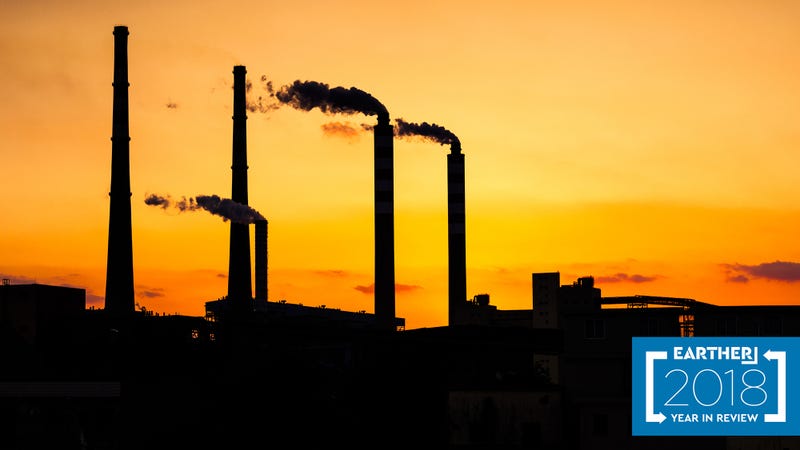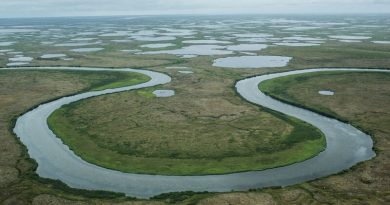Planet-Hacking Became More Urgent And Terrifying Than Ever This Year

Photo: Getty
 Year In ReviewWe look back at the best, worst, and most significant moments of the year, and look forward to next year.
Year In ReviewWe look back at the best, worst, and most significant moments of the year, and look forward to next year. Somewhere between a viral fake story about Harvard researchers suggesting we ‘dim the sun’, and a major, government-funded report laying out how we might re-engineer the oceans to save coral reefs, it hit me last month: This whole geoengineering idea has become suddenly, frighteningly mainstream.
Geoengineering—a grab bag of ways we could use technology to essentially hack the planet and cool if off—isn’t a new concept. Various ideas have been around since the 1960s and ‘70s, but the subject has long languished on the fringes of the scientific discourse. In recent years, though, interest in geoengineering has snowballed, and it reached new heights in 2018 with a series of media blitzes, a cover story in Nature, and a small-but-auspicious mention in a major new UN climate report. (More on that last one in a moment.)
The concept that continued to garner the lion’s share of the headlines and research interest in 2018 was solar geoengineering—specifically, a flavor known as stratospheric aerosol injection (SAI) wherein we mist the upper atmosphere with small, reflective particles to bounce more sunlight back into space. There’s now an entire research program at Harvard devoted to the subject, and plans are being drawn up for a possible small-scale field experiment in 2019. But other once-science fictional ideas made waves in the media this year, too.
There was a paper suggesting we build a giant wall to prevent the Antarctic ice sheet from collapsing. There’s now a serious—if heavily criticized—proposal to cool the Great Barrier Reef by pumping deep ocean water onto its banks. As a National Academies of Sciences report made clear this year, ‘negative emissions technologies’ aka sucking carbon out of the sky, will have to play a role in addressing climate change to offset future emissions from sectors like agriculture. That’s arguably a form of geoengineering, too. While these proposals run the gamut from borderline fantasy to Y-combinator investment opportunities, the sheer breadth of ideas and the power players behind them make it clear planet hacking is a now a pillar of the mainstream climate conversation.
It’s equally clear that we need to have that conversation very, very carefully.
As study after study noted this year, solar engineering could have unintended and potentially devastating side effects. There’s also a danger of geoengineering being presented as a silver bullet solution to climate change (it isn’t), thus eliminating already-fragile governmental ambition to rein in carbon emissions. If we can spray the skies and stabilize global temperatures next year with a dozen planes and a few billion bucks, why not choose that option over (*checks notes on the bombshell UN climate report*) “rapid, far-reaching and unprecedented changes in all aspects of society”?
Advertisement
The answer, of course, is that nothing about this is simple. SAI, for one, does nothing to reduce acidification of the oceans. Since it doesn’t address our ever-rising carbon emissions so much as it smears sunscreen all over them, we’d have to keep spraying forever if no other mitigation measures were taken. The aforementioned side effects? A potential drying up of vital monsoon rains in Southeast Asia, or perhaps the death of the Amazon rainforest.
Gernot Wagner, a social scientist at Harvard University who studies solar geoengineering, knows a little about how discussion of this topic can get distorted, having co-authored a study that went viral over Thanksgiving weekend when CNN packaged it under a headline suggesting “dimming the sun” might be “the answer to global warming”. (In fact, his paper made no such suggestion, and looked only at the very narrow question of how much it would cost to get an SAI program started.)
Wagner hopes that as the idea of geoengineering becomes more mainstream, the public conversation can move beyond breathless headlines about scientists proposing wild experiments, and into the territory of “could this topic play in fact a role in a much broader climate policy portfolio.” There’s also a huge conversation on governance of geoengineering—who would control and direct such an initiative—we’ve barely dipped our toes in.
Advertisement
And we may need to spin up those serious conversations sooner than later. Because if 2018 was a year in which geoengineering reached new levels of public awareness, it was also a year in which the urgency to do something to address climate change reached fever pitch. The aforementioned UN climate report, published in October, concluded we have a little more than a decade to dramatically phase down global fossil fuel consumption in order to limit global warming to 1.5 degrees Celsius. Beyond that, we lose most of the world’s coral reefs and entire island nations start getting swallowed by the waves.
But in a whisper that made few headlines, the report also said something else. Buried in a box in chapter 4, the UN report notes there’s “high agreement” that SAI could help limit warming to below 1.5 degrees Celsius. And we’re approaching the point where we might just need all the help we can get.
READ MORE HERE



